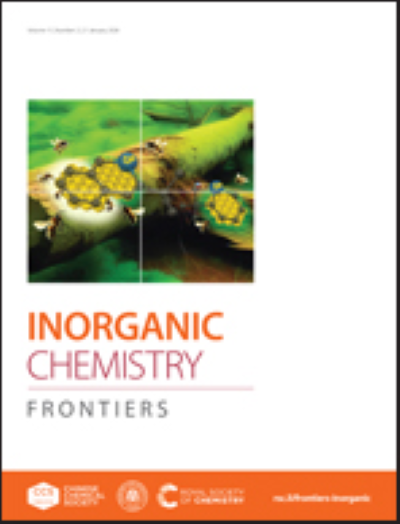在夹层结构bi0.5 na0.5 tio3基介电陶瓷中获得了高电容性能
IF 6.1
1区 化学
Q1 CHEMISTRY, INORGANIC & NUCLEAR
引用次数: 0
摘要
随着电力电子技术的不断发展和环境问题的日益关注,高能量存储无铅陶瓷电容器已成为介电材料研究的关键。然而,改善介电极化特性和增加击穿强度之间的内在妥协仍然是推进储能能力的主要制约因素。为了突破这一束缚,本研究将高极化弛豫铁电层与高电场击穿的线状介电层交替排列,通过带式铸造和固态烧结制备了夹层结构bi0.5 na0.5 tio3基无铅陶瓷。该材料表现出卓越的储能能力,在800 kV cm - 1下具有11.02 J cm - 3的可回收密度和79.1%的卓越效率。值得注意的是,它在宽频率(1-100 Hz)和温度(30-160°C)范围以及疲劳循环(1-105)范围内保持稳定的电容行为。这一突破表明,夹层结构协同解决了无铅陶瓷的极化-击穿强度悖论,通过界面工程优化同时实现了介电增强和储能增强。本文章由计算机程序翻译,如有差异,请以英文原文为准。

High capacitive performances obtained in sandwich structured Bi0.5Na0.5TiO3-based dielectric ceramics
As power electronics continue to advance and environmental concerns grow, high energy storage lead-free ceramic capacitors have become pivotal in dielectric materials research. However, the inherent compromise between improved dielectric polarization properties and increased breakdown strength persists as a primary constraint in advancing energy storage capabilities. To break through this shackle, sandwich structured Bi0.5Na0.5TiO3-based lead-free ceramics are designed by alternatively arranging the relaxor ferroelectric layer with high polarization and the linear-like dielectric layer with high electric field breakdown and fabricated through tape casting and solid state sintering in this work. The material demonstrates exceptional energy storage capability featuring a record recoverable density of 11.02 J cm−3 and superior efficiency (79.1%) at 800 kV cm−1. Remarkably, it maintains stable capacitive behavior across wide frequency (1–100 Hz) and temperature (30–160 °C) ranges, and fatigue cycles (1–105). This breakthrough demonstrates that sandwich architecture synergistically resolves the polarization–breakdown strength paradox in lead-free ceramics, achieving simultaneous dielectric reinforcement and energy storage enhancement through interfacial engineering optimization.
求助全文
通过发布文献求助,成功后即可免费获取论文全文。
去求助
来源期刊

Inorganic Chemistry Frontiers
CHEMISTRY, INORGANIC & NUCLEAR-
CiteScore
10.40
自引率
7.10%
发文量
587
审稿时长
1.2 months
期刊介绍:
The international, high quality journal for interdisciplinary research between inorganic chemistry and related subjects
 求助内容:
求助内容: 应助结果提醒方式:
应助结果提醒方式:


